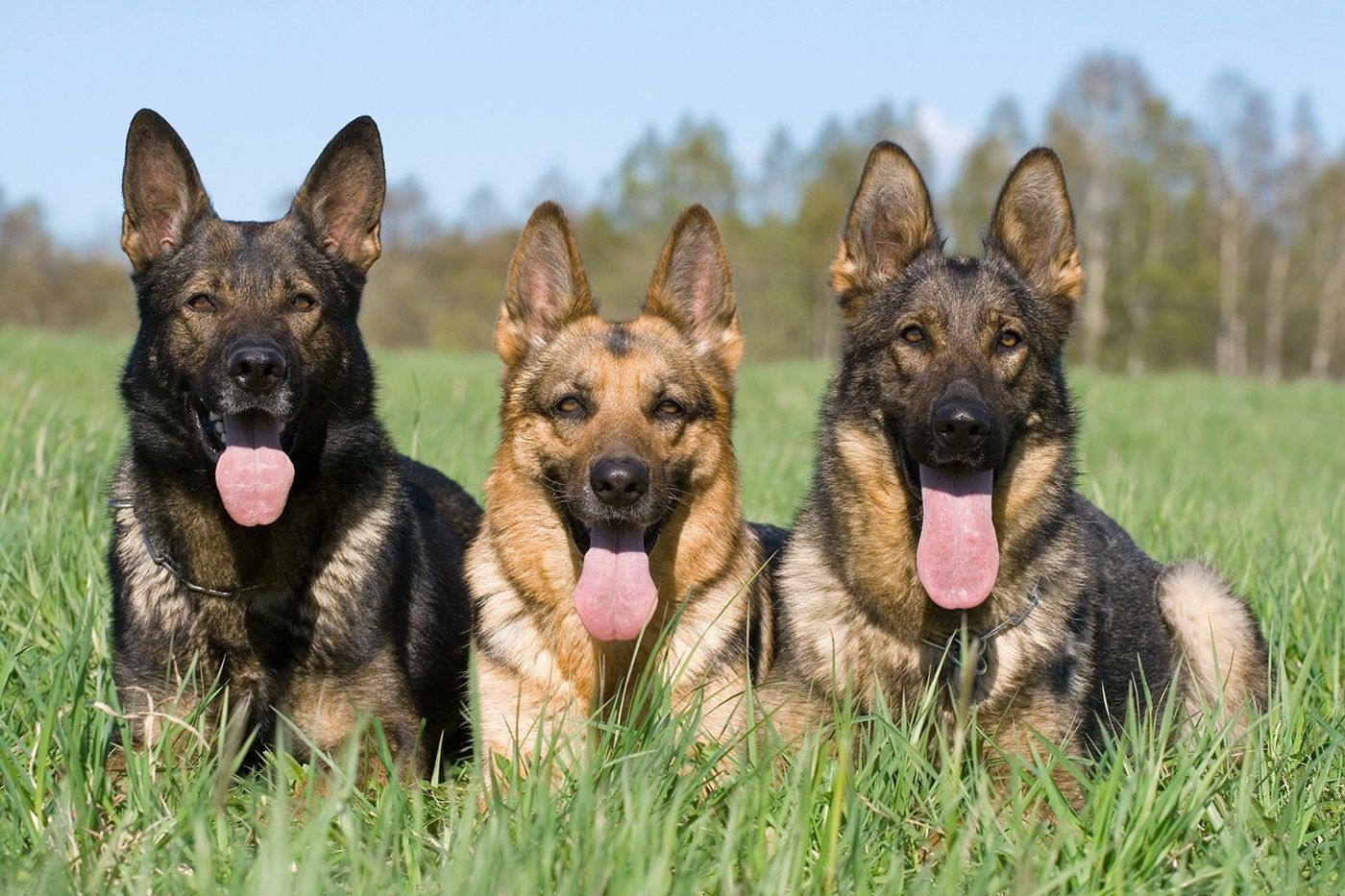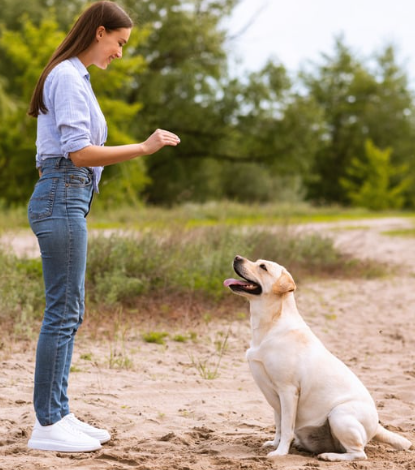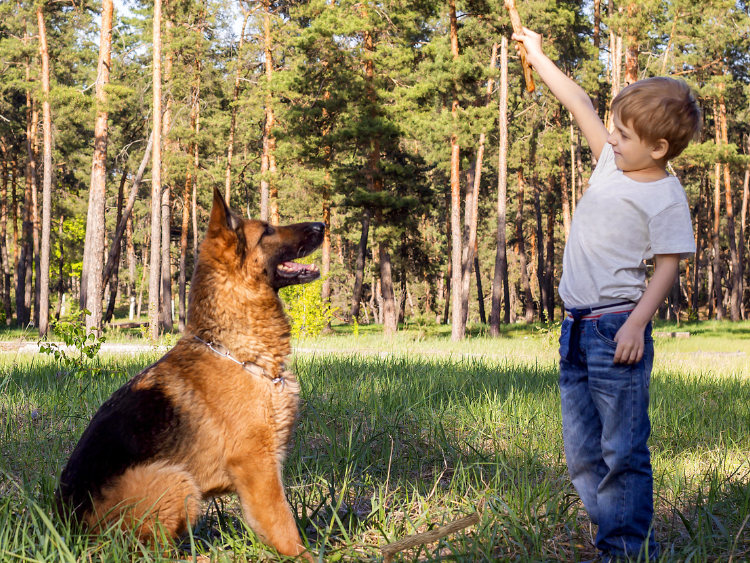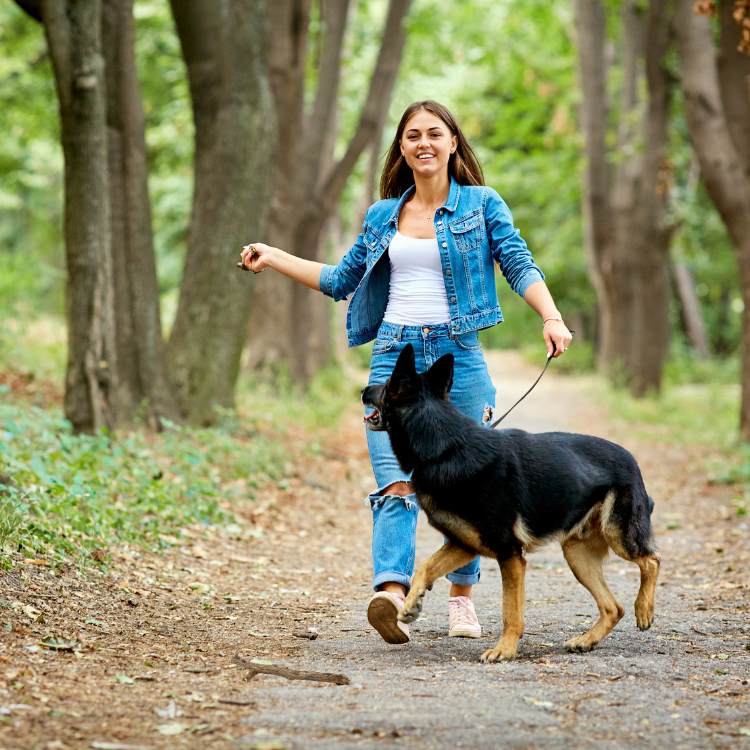Everything You Need to Know About the European German Shepherd
If you’re new to learning about
German Shepherd Protection Dogs, it’s easy to get confused on why there are so many lines and strains, and what the difference is between them. Between working lines, show lines, East German and West German, there are a lot of subtle distinctions drawn between GSD lines. And hearing the words “European German Shepherd” doesn’t exactly give you any clues as to what the important attributes of this dog are. That’s why we created this guide!

Understanding the GSD Breed
If the differences between American German Shepherds and European Shepherds aren’t obvious to you, there’s a good reason for that. European German Shepherds are in fact the same breed as American German Shepherds, they’ve just been bred to European Kennel Club standards rather than those of the American Kennel Club.
Though they are the same breed, because they are bred on two different continents, and to two different standards, there are distinct differences as well as similarities.
European German Shepherd is a blanket term for different lines found in Europe. Outside of American German Shepherds, also known as American Show Lines, there are four other lines of German Shepherd Dog:
- West German Show Lines
- West German Working Lines
- East German Working Lines
- Czech Working Lines
These lines all have their own history and characteristics, though they all descend from the same European German Shepherd breed. It’s important to note that all individual dogs are different, and that variations are common within a certain line.
This guide explores all of the typical characteristics of a European German Shepherd, from appearance to temperament to how much exercise they need. We also compare the European German Shepherd to the American German Shepherd, so you can understand which line might be best for you. Let’s get started!
Appearance and Temperament
German Shepherds are one of the most recognizable and popular breeds of dog that exist. Because of their reputation as great working dogs, they are often found working alongside police officers and military personnel, but they can also make great family pets.
European German Shepherd physical characteristics include:
- Wedge-shaped head
- Dark, almond-shaped eyes
- Black nose
- Medium-sized, erect ears
- Straight back and slight slope toward rump
- Have an undercoat
- Mostly reddish-brown and black, but can vary
American German Shepherds are different in that they are usually bigger and longer, with smaller heads and a much more exaggerated slope to their rear end.
As far as temperament, European German Shepherds were purposefully bred as working dogs, so can exhibit some protective behaviors, including herding and guarding. They are intelligent and should be attentive and eager to please. They can make good family pets if they are well trained and socialized, but a family looking for just a pet might have better luck with an American German Shepherd, which are known for being less intense and generally more relaxed.
Exercise and Training
Because of their work ethic, European German Shepherds need intense exercise every day to keep themselves from getting into trouble. Attention and interactive play will be crucial if you decide on this line as your next family pet. American German Shepherds are similar in that they need at least 60 minutes of exercise a day, as well as a basket of toys to keep them occupied during the rest of the day.
One great attribute of European German Shepherds is their compliance with positive reward training. Because they are active and intelligent, they thrive on the mental stimulation training provides.Training is essential for keeping these dogs well-behaved, whether in a work environment or at home on the couch. American German Shepherds are also smart and easily trainable, they just may pick up on commands a little slower than their European cousins.
Health and Lifespan
European German Shepherds tend to live longer than American German Shepherds due to the way they are bred: the American dogs tend to live between 7 and 10 years, while the European lives between 10 and 12 years. This is because European shepherds are screened for health concerns more often, and because breeding practices are more regulated than they are in America.
American GSDs are more prone to joint problems due to their sloped back and shorter back legs. European lines were bred to have longer hind legs and straighter backs, making that less of a concern. Where the breed as a whole suffers is in the form of hip and elbow dysplasia, but tests and screening have helped lessen this tendency. If you’re getting a GSD, ask the breeder to provide hip scores for the dog’s parents. This can help you determine if your dog will be healthy or not down the line.
Other Things to Consider
Shedding
Shedding is an unavoidable trait of any type of German Shepherd. Short-haired GSDs need to be brushed weekly, while long-haired dogs will need much more frequent brushing to remove shed hair. This is not a good dog for people with allergies or who can’t stand dog hair being everywhere during the shedding season.
Socialization
Getting a puppy used to meeting other dogs and strangers from a young age is vital for this breed. This will help your European German Shepherd grow up to be confident and social when approached by other people, as well as teach them how to behave.
Picking a Reputable Breeder
Knowing the conditions under which your puppy was bred is imperative to ensure you have picked a dog that will be healthy and happy. Puppy mills push out dogs with health conditions and other issues due to irresponsible and unscrupulous breeding practices. Do your research before selecting a breeder, and talk to others who have purchased dogs to hear their experiences.
Deciding Which GSD Is Right For You When Searching for European German Shepherds for Sale
We understand that’s a lot of information, and of course there are other elements of owning a dog that aren’t touched on in this guide. But if you’re looking for a responsible breeder that specializes in quality European German Shepherd Dogs as well as other working and
protection dogs, Full Contact K9 is the place for you.
We have german shepherds for sale as well as puppies that have been primed for obedience training.
Visit our website to learn more, or give us a call at 678-235-5959.
EVAN DUNBAR
Evan Dunbar is the President of Full Contact K9 and ProK9 Equipment. At an early age he was inspired by his uncle who introduced him to work-oriented dogs. Since that time, Evan has had the opportunity to study from and train with the “who’s who” of the working dog world.
His areas of expertise include advanced obedience, personal protection, service K9, and pet instruction. He is also an active participant in Schutzhund and French Ring dog sports. A modern and dynamic trainer, Evan’s unique style is technical and combines elements of both positive methods with classical approaches.
Full Contact Canine LLC is the culmination of a lifelong respect for animals, his passion for dogs, and Evan’s personal beliefs which emphasize ingenuity, integrity, and continuous learning in the world of professional dog training. He earned his B.B.A from Mercer University.
Evan has assembled a team of some of the most respected trainers in the industry to offer Full Contact K9 clients unparalleled experience, skill and service.



